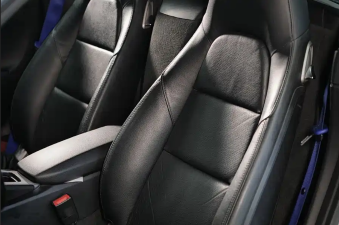
1. Uncertain Vehicle Quality: Building a Multidimensional Verification System
The lack of transparency in used car conditions is perhaps the most significant hurdle in the industry. Without proper due diligence, buyers risk purchasing accident - damaged, flood - affected, or odometer - tampered vehicles. To accurately assess a vehicle's true condition, a comprehensive, multi - pronged approach is essential.
Start by leveraging authoritative vehicle history report tools. Services like Carfax and AutoCheck provide detailed insights into a vehicle's past, including accident records, maintenance history, and ownership changes. While these reports are invaluable, they are not infallible; minor repairs or unreported incidents may go undetected. Therefore, it’s crucial to complement them with professional inspections.
Seek out automotive service providers certified by the ASE (Automotive Service Excellence). These experts can conduct thorough examinations, scrutinizing everything from the engine and transmission to the braking system and electronics. Additionally, request the vehicle’s maintenance records directly from the seller, which can offer further evidence of its upkeep. Understanding the vehicle’s usage history—such as whether it was previously a rental car or used primarily for long - distance travel—also provides valuable context for assessing its overall quality.
2. Opaque Pricing: Establishing a Scientific Price - Comparison Framework
Used car pricing is influenced by numerous factors, including make, model, year, mileage, condition, and regional demand. This variability often leads to inconsistent pricing across the market, leaving buyers vulnerable to overpaying. To cut through the price fog, it’s essential to develop a structured approach to price comparison.
Utilize trusted pricing resources like Kelley Blue Book and Edmunds. These platforms analyze extensive market transaction data to provide reliable price ranges for vehicles in different conditions. Additionally, monitor multiple online marketplaces, such as Autotrader, Cargurus, and Carvana, to track price trends for your desired model.
Don’t rely solely on online research; visit local dealerships to gauge offline market prices. During negotiations, resist the initial asking price and use your research to negotiate a fair deal. Also, consider the long - term cost of ownership, including fuel consumption, insurance premiums, and maintenance expenses, as these factors significantly impact a vehicle’s overall affordability.
3. Complex Financing Options: Charting a Clear Decision - Making Path
The used car financing landscape is filled with a maze of options, from down payment requirements and interest rates to repayment terms. Navigating these complexities can be overwhelming, especially for first - time buyers. To select the right financing plan, it’s crucial to create a clear decision - making framework.
Begin by assessing your financial situation and repayment capacity. Determine a realistic budget and down payment amount, and use online loan calculators to estimate monthly payments under different scenarios. Shop around and compare offers from various lenders, including banks, credit unions, and automotive finance companies, paying close attention to interest rates, fees, and prepayment penalties.

Beware of seemingly attractive promotions, such as “low down payment” or “zero - interest” deals, which may conceal hidden terms or costs. Before signing any contracts, read the fine print carefully, and consult financial advisors or legal experts if you have questions.
Armed with these strategies, you can confidently navigate the US used car market, making informed decisions that align with your needs and financial goals. Whether you’re a first - time buyer or a seasoned car enthusiast, these solutions will help you unlock the benefits of affordable, reliable transportation. If you encounter further challenges along the way, explore additional resources and expert advice to ensure a smooth and successful car - buying experience.












